Hair transplant procedure in 2024. Does hair transplant work??
- Hair transplant procedure:
- Lets discuss the science behind the hair growth and hair loss:
- We know there are two main method of Hair transplant surgery or hair transplant procedure :
- Hair transplant surgery or hair transplant procedure is a meticulous process that involves several steps, each requiring careful consideration and expertise.
- Here’s a step-by-step breakdown of the procedure, pre-operative considerations, and the roles of the surgeon and surgical team:
- Hair transplant procedures can have both physical and psychological impacts on individuals undergoing the treatment. Here are some physical impacts of hair transplants:
- An ideal candidate for a hair transplant procedure typically meets the following criteria:
- The cost of hair transplant surgery in India can vary widely based on several factors. Here’s an overview of what influences the cost and the average expenses you can expect:
- Hair transplant in USA:
- After a hair transplant, it’s crucial to follow proper recovery and aftercare guidelines to ensure optimal results:
- Hair transplant procedure, like any medical procedure, comes with certain risks and potential complications.Here are some of the risks associated with hair transplant procedure:
- Medication can serve as a non-surgical alternative to hair transplant procedure for those experiencing hair loss. Here are some of the most commonly used medications:
- Choosing the right surgeon and clinic for a hair transplant procedure is a critical decision that can significantly affect the outcome of your hair transplant procedure. Here are some key factors to consider when making your choice:
- The Best Hair Transplant Doctors in the USA:
- 5 Best Hair Transplant Doctors in India:
- More you may Like:
- The Best Hair Transplant Clinics in India listed below:
Hair transplant procedure:
Introduction(hair transplant procedure):
Hair transplant procedures involve the surgical transplantation of hair follicles from one part of the body (usually the back or sides of the scalp) to areas where hair loss has occurred, typically the scalp. The history of hair transplant procedure dates back to the 19th century when surgeons first experimented with hair transplant procedure.
However, modern hair transplant procedures began in the 1950s, with the advent of punch grafting techniques. Over the years, advancements in technology and techniques, such as follicular unit transplantation (FUT) and follicular unit extraction (FUE), have made hair transplant procedure more effective and natural-looking. Today, hair transplant procedures are commonly used to treat male and female pattern baldness, as well as other types of hair loss.
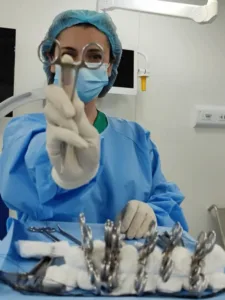
Pic credit: Pinterest
Lets discuss the science behind the hair growth and hair loss:
Hair growth and loss are influenced by various factors, including genetics, hormones, age, and overall health. Here’s a brief overview of the science behind both:
1. Hair Growth (Anagen Phase):
Hair growth occurs in cycles, with three main phases: anagen, catagen, and telogen. The anagen phase is the active growth phase, during which hair follicles produce new hair cells. This phase can last anywhere from two to seven years, depending on genetics and other factors. The rate of hair growth is typically around half an inch per month, though this varies among individuals.
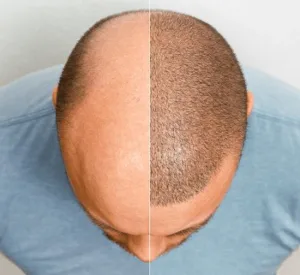
Pic credit: Pinterest
2. Hair Loss (Catagen and Telogen Phases):
After the anagen phase, hair enters the catagen phase, a transitional period lasting a few weeks. During this phase, hair growth slows down, and the hair follicle shrinks. Finally, the telogen phase, or resting phase, occurs, lasting about three months. During this phase, the hair follicle remains dormant before eventually shedding the hair shaft.
3. Factors Influencing Hair Loss:
– Genetics:Male and female pattern baldness (androgenetic alopecia) is the most common cause of hair loss, with genetic predisposition playing a significant role.
– Hormones:Hormonal changes, such as fluctuations in androgen levels (e.g., testosterone and dihydrotestosterone), can affect hair growth cycles and lead to hair loss.
– Age: As people age, the rate of hair growth slows down, and hair follicles may become smaller and produce thinner, shorter hair strands.
– Health Conditions:Certain medical conditions, such as thyroid disorders and autoimmune diseases, can cause hair loss. Additionally, nutritional deficiencies and chronic stress can contribute to hair loss.
– Environmental Factors:Exposure to pollutants, harsh chemicals, and excessive heat or styling can damage hair follicles and contribute to hair loss.
Understanding the science behind hair growth and loss is crucial for developing effective treatments, such as medications (e.g., minoxidil and finasteride), surgical interventions (e.g., hair transplant), and lifestyle modifications to promote healthy hair growth.
We know there are two main method of Hair transplant surgery or hair transplant procedure :
Hair transplant procedure surgery has evolved significantly over the years, and two of the most prominent techniques that have emerged are Follicular Unit Extraction (FUE) and Follicular Unit Transplantation (FUT). Both methods aim to restore hair growth in areas affected by baldness or thinning, but they differ in their approach to follicle extraction and transplantation.
Follicular Unit Extraction (FUE):
– Procedure: In FUE, individual hair follicles are extracted directly from the donor area of the scalp using a specialized punch tool.
– Scarring:This technique leaves minimal scarring as it does not involve removing a strip of tissue.
– Recovery: Patients typically experience a quicker recovery time and less post-operative discomfort.
– Best For:FUE is often preferred by patients who like to keep their hair short, as the scarring is less noticeable.
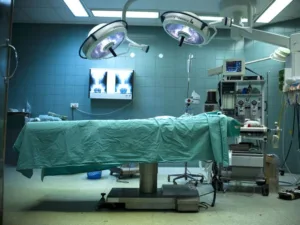
pic credit: Pinterest
Follicular Unit Transplantation (FUT):
– Procedure: FUT involves removing a strip of skin with hair follicles from the donor area, which is then dissected into individual grafts.
– Scarring: It leaves a linear scar where the strip was removed, which can be concealed by longer hair.
– Recovery: The recovery may be slightly longer due to the surgical nature of the strip removal.
– Best For: FUT is often chosen by patients who require a large number of grafts in a single session.
Both FUE and FUT are effective hair transplant techniques, and the choice between them often depends on the patient’s hair loss pattern, the quantity of donor hair available, lifestyle, and personal preferences. It’s important for individuals considering a hair transplant to consult with a qualified surgeon to determine the most suitable method for their specific needs.
Hair transplant surgery or hair transplant procedure is a meticulous process that involves several steps, each requiring careful consideration and expertise.
Here’s a step-by-step breakdown of the procedure, pre-operative considerations, and the roles of the surgeon and surgical team:
Step-by-Step Breakdown of the Hair Transplant Procedure:
1. Consultation: The first step is a detailed consultation with the surgeon to discuss goals, expectations, and the suitability of the procedure.
2. Preparation: Before the procedure, the patient’s scalp is prepared, which may involve trimming or shaving the donor area.
3. Anesthesia: Local anesthesia is administered to the donor and recipient areas to minimize discomfort during the procedure.
4. Donor Harvesting:Depending on the technique (FUE or FUT), hair follicles are extracted from the donor area.
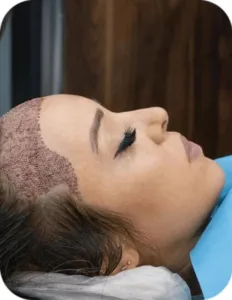
Pic credit: Pinterest
5. Graft Preparation:The extracted follicles are then prepared under a microscope to ensure they are viable for transplantation.
6. Recipient Site Creation:The surgeon makes tiny incisions in the recipient area to receive the grafts.
7. Transplantation: The prepared grafts are carefully placed into the incisions, following the natural hair growth pattern.
8. Closure: If the FUT method is used, the donor area is sutured; FUE does not require suturing.
9. Post-Operative Care: The patient receives instructions for caring for the transplanted area to ensure proper healing and growth.
Pre-Operative Considerations and Preparations for hair transplant procedure:
– Medical Evaluation: A thorough medical evaluation to assess the patient’s health and suitability for the hair transplant procedure.
– Lifestyle Adjustments:Patients are advised to quit smoking and avoid alcohol before the surgery to optimize healing.
– Medication Review: Certain medications, especially blood thinners, may need to be stopped prior to the hair transplant procedure.
– Scalp Health: Ensuring the scalp is in good condition, which may involve treating any pre-existing scalp conditions.
Role of the Surgeon and Surgical Team in hair transplant procedure:
– Surgeon: The surgeon is responsible for planning the hair transplant procedure, designing the hairline, administering anesthesia, making incisions at the recipient site, and overseeing the entire process.

Pic credit: Pinterest
– Surgical Team:The team typically includes technicians and nurses who assist with graft preparation, counting, and implantation. They also help maintain a sterile environment and provide support throughout the hair transplant procedure.
Choosing a qualified and experienced surgeon and surgical team is crucial for the success of a hair transplant procedure. It’s important for patients to do their research and select a clinic that upholds the highest standards of care and safety.
Hair transplant procedures can have both physical and psychological impacts on individuals undergoing the treatment. Here are some physical impacts of hair transplants:
1. Surgical Procedure: Hair transplant procedures involve surgery, which carries typical risks associated with any surgical intervention, such as bleeding, infection, and scarring. However, advancements in techniques, such as FUT and FUE, have minimized these risks.
2. Healing Process: After the hair transplant procedure, the scalp may experience swelling, redness, and discomfort, which typically subside within a few days to weeks. Proper post-operative care, including keeping the scalp clean and avoiding strenuous activities, can aid in the healing process.
3. Transplanted Hair Growth: Following a hair transplant procedure, the transplanted hair follicles undergo a temporary shedding phase before new hair growth occurs. It may take several months for the transplanted hair to start growing and for the full results to become visible.

Pic credit: Pinterest
4. Scarring: Depending on the technique used (FUT or FUE), there may be minimal scarring. FUT typically leaves a linear scar along the donor area, while FUE leaves small, circular scars scattered across the donor site. However, these scars are usually easily concealable with hair growth and proper styling.
5. Natural Appearance: With advancements in technology and techniques, modern hair transplant procedure aim to achieve natural-looking results. Skilled surgeons carefully place the transplanted follicles to mimic natural hair growth patterns, ensuring a seamless integration with existing hair.
An ideal candidate for a hair transplant procedure typically meets the following criteria:
1. Sufficient Donor Hair: Good candidates have an adequate supply of donor hair, usually from the back or sides of the scalp, that can be transplanted to the areas of hair loss.
2. Stable Hair Loss: Candidates should have stable hair loss, meaning that their hair loss has stabilized, and they are not experiencing rapid progression. This helps ensure that the transplanted hair will not be subject to further loss.
3. Good General Health: Candidates should be in good overall health, as hair transplant procedures are surgical interventions that require the body to heal properly.
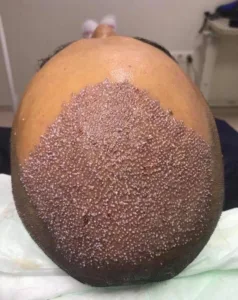
Pic credit: Pinterest
4. Realistic Expectations: It’s crucial for candidates to have realistic expectations about the results of the hair transplant procedure. While modern hair transplant procedure can yield natural-looking results, they may not be able to achieve the exact hair density or hairline of their youth.
5. Commitment to Aftercare: Candidates should be willing to commit to the post-operative care regimen recommended by their surgeon, including proper wound care, avoiding strenuous activities, and following any prescribed medications.
Importance of Realistic Expectations:
Having realistic expectations is essential for a successful hair transplant procedure experience. While the hair transplant procedure can significantly improve the appearance of hair loss, it may not fully restore the hair density or hairline of youth. It’s important for candidates to understand that hair transplants can provide noticeable improvement but may not result in perfection. Open communication with the surgeon about desired outcomes and realistic expectations is crucial for satisfaction with the results.
Who Might Not Be Suitable for the hair transplant procedure:
Not everyone is an ideal candidate for a hair transplant. Individuals who may not be suitable for the hair transplant procedure include:
1. Advanced Hair Loss: Individuals with extensive hair loss may not have a sufficient donor hair supply to achieve satisfactory results.
2. Unstable Health Conditions: Candidates with certain medical conditions or those who are not in good overall health may not be suitable candidates for hair transplant procedure surgery.
3. Unrealistic Expectations: Candidates who have unrealistic expectations about the results of the hair transplant procedure may not be satisfied with the outcome, leading to dissatisfaction and disappointment.

Pic credit: Pinterest
4. Young Age: Hair transplant surgeons typically recommend waiting until the hair loss stabilizes before undergoing the hair transplant procedure. Younger individuals experiencing early hair loss may not be suitable candidates until their hair loss pattern has stabilized.
5. Financial Constraints: Hair transplant procedures can be costly, and individuals who cannot afford the hair transplant procedure or ongoing maintenance may not be suitable candidates.
The cost of hair transplant surgery in India can vary widely based on several factors. Here’s an overview of what influences the cost and the average expenses you can expect:
Factors Influencing the Cost:
– Technique Used: The choice between FUE and FUT can affect the cost, with FUE generally being more expensive due to its labor-intensive nature.
– Number of Grafts: The extent of hair loss and the number of grafts needed play a significant role in determining the price.
– Surgeon’s Expertise: The experience and reputation of the surgeon can influence the cost. More renowned surgeons may charge higher fees.
– Location: Costs can vary depending on the city and the clinic’s location within India.
– Additional Treatments: Any additional treatments or procedures required can add to the overall cost.
Average Costs:
– The starting price for hair transplant surgery in India can be as low as Rs 30,000 and can go up to Rs 5,00,000, depending on the severity of hair loss and the number of grafts required.
– The average cost for hair transplant procedure across various cities in India is approximately Rs 57,633.
– The cost per graft can range from Rs 25 to Rs 50, so for 1000 grafts, you might expect to pay between Rs 25,000 to Rs 50,000 on average.
It’s important to note that while cost is a significant factor, the quality of the hair transplant procedure and the surgeon’s expertise should also be key considerations when deciding on a hair transplant. It’s advisable to consult with multiple clinics, compare their offerings, and read patient reviews to make an informed decision. Remember, a successful hair transplant procedure can have long-lasting results, so choosing the right surgeon and clinic is crucial for a satisfactory outcome.
Hair transplant in USA:
After a hair transplant, it’s crucial to follow proper recovery and aftercare guidelines to ensure optimal results:
1. Post-Surgery Care:
Immediately after the hair transplant procedure, you may experience some swelling, discomfort, and minor bleeding. Your surgeon will provide instructions on how to manage these symptoms, which may include pain medications, cold compresses, and avoiding strenuous activities.
2. Protecting the Transplanted Area:
It’s important to protect the transplanted area from any trauma or friction. This may involve avoiding tight headwear, gentle washing of the scalp, and being cautious when combing or styling your hair.
3. Medications: Your surgeon may prescribe antibiotics or anti-inflammatory medications to prevent infection and reduce swelling.
4. Avoiding Certain Activities:
For a few weeks after the surgery, you’ll need to avoid activities that could disrupt the healing process, such as heavy exercise, swimming, and excessive sun exposure.
5. Follow-up Appointments: Regular follow-up appointments with your surgeon are essential to monitor your progress and address any concerns or questions you may have.
6. Patience: Hair transplant results take time to fully develop. It’s important to be patient and follow your surgeon’s instructions for the best outcome.
Hair transplant procedure, like any medical procedure, comes with certain risks and potential complications.Here are some of the risks associated with hair transplant procedure:
1. Infections:
– Risk: Every surgical procedure involving skin penetration carries a chance of infection.
– Signs: Excessive redness, swelling, drainage, burning, and itching on the scalp.
– Treatment: Mild infections can be treated with antibiotics and proper scalp hygiene. However, untreated infections can lead to hair follicle loss and adverse results.
– Prevention: Choose a reputable clinic with strict hygiene practices, follow post-transplant care guidelines, and avoid touching or scratching the scalp during healing.
2. Scabs and Crusts on the Scalp:
– Risk: After the surgery, scabs and crusts may form on the scalp where grafts were placed.
– Treatment: Proper post-operative care, including gentle washing, can help prevent excessive scab formation.
– Prevention: Follow your surgeon’s instructions for scalp care and avoid picking at scabs.
3. Bleeding:
– Risk: Some bleeding may occur during or after the procedure.
– Treatment: Surgeons take precautions to minimize bleeding during surgery.
– Prevention: Choose an experienced surgeon and follow their guidelines for a smooth recovery.

Pic credit: Pinterest
4. Swelling:
– Risk: Swelling can occur on the forehead, eyelids, or face after the surgery.
– Treatment: Swelling usually subsides within a few days.
– Prevention: Rest, elevate your head, and follow post-operative instructions.
5. Pain and Discomfort:
– Risk: Pain and discomfort are common after the procedure.
– Treatment: Pain medications prescribed by your surgeon can help manage discomfort.
– Prevention: Follow post-surgery care instructions diligently.
6. Loss of Sensation and Numbness:
– Risk: Temporary or permanent loss of sensation in the scalp.
– Treatment: Sensation often returns over time, but it can vary.
– Prevention: Regular follow-up with your surgeon to monitor healing.
7. Shock Loss:
– Risk: Existing hair around the transplanted area may temporarily fall out due to trauma.
– Treatment: New hair growth occurs over time.
– Prevention: Understand that shock loss is a normal part of the hair transplant procedure.
8. Scarring:
– Risk: Scarring can occur at both the donor and recipient sites.
– Treatment: Proper wound care minimizes visible scarring.
– Prevention: Choose a skilled surgeon who can minimize scarring.
9. Unnatural, Patchy New Hair Growth:
– Risk: Sometimes the transplanted hair may not grow uniformly or appear unnatural.
– Treatment: Corrective procedures may be needed.
– Prevention: Proper planning and precise placement of grafts by an experienced surgeon.
Remember that while these risks exist, most of them are manageable with proper care and follow-up. Choosing a skilled surgeon and adhering to post-operative instructions significantly contribute to a successful hair transplant outcome. Always consult with a qualified professional to assess your individual case and discuss any concerns you may have.
Medication can serve as a non-surgical alternative to hair transplant procedure for those experiencing hair loss. Here are some of the most commonly used medications:
Minoxidil:
– Usage:Applied topically, usually as a liquid or foam, to the scalp.
– Action: It works by stimulating hair follicles to grow and can slow hair loss.
– Suitability: Effective for both men and women with pattern baldness.
– Availability: Over-the-counter in various strengths.
Finasteride:
– Usage: Taken orally in pill form.
– Action: It inhibits the hormone dihydrotestosterone (DHT), which is linked to hair loss, thereby reducing hair thinning and promoting hair regrowth.
– Suitability: Primarily prescribed for men with pattern baldness.
– Availability: Prescription-only medication.
Saw Palmetto:
– Usage:Available as oral supplements.
– Action: Believed to work similarly to finasteride by blocking DHT.
– Suitability: Used by both men and women; however, its effectiveness is less documented than finasteride and minoxidil.
These medications can be particularly beneficial for individuals in the early stages of hair loss, as they may help to slow down the progression and, in some cases, stimulate regrowth. It’s important to note that while these medications can be effective, they typically require ongoing use to maintain results, and their efficacy may vary from person to person. Always consult with a healthcare professional before starting any treatment for hair loss to ensure it’s appropriate for your specific condition and to understand any potential side effects.
Choosing the right surgeon and clinic for a hair transplant procedure is a critical decision that can significantly affect the outcome of your hair transplant procedure. Here are some key factors to consider when making your choice:
Reputation and Experience:
– Look for clinics with a strong reputation and a track record of successful hair transplant procedures. Research online, read reviews, and check for any complaints or legal issues.
Qualified Surgeons:
– Ensure the clinic has certified surgeons specializing in hair transplantation. Check their qualifications, credentials, and memberships in professional organizations.
Technology and Techniques:
– Clinics should employ modern technologies and stay updated with the latest advancements like FUE, DHI, and Robotic Hair Transplantation.
Infrastructure and Facilities:
– Evaluate the clinic’s environment. It should be clean, hygienic, and well-equipped with advanced operation theaters and proper safety protocols.
Natural Results and Before/After Photos:
– Request to see before and after photos of previous patients to assess the quality of work and ensure their aesthetic approach aligns with your expectations.
Surgeon’s Involvement:
– Understand who will perform each aspect of the hair transplant procedure. Some surgeons delegate tasks to staff, so ensure transparency and accountability.
Consultation:
– A good clinic will offer a thorough consultation to discuss your goals, expectations, and the details of thehair transplant procedure.
Cost Considerations:
– While cost is important, it should not be the sole deciding factor. Quality and safety are paramount.
Location:
– Although local options may be convenient, don’t limit your search based on geography alone. The best choice might require travel.
Aftercare and Support:
– Post-operative care and support are essential for a successful recovery. Ensure the clinic provides comprehensive aftercare services.
Take the time to visit multiple clinics, ask questions, and feel comfortable with the clinic and the surgeon. Remember, a hair transplant procedure is a long-term investment in your appearance and well-being, so choose wisely to ensure the best possible results.
The Best Hair Transplant Doctors in the USA:
| Doctor | Transplants Performed | Years Practicing Hair Restoration | Honors & Awards | Clinic Location(s) | Average Patient Reviews |
|---|---|---|---|---|---|
| Dr. Grant Koher | ~ 20,000 + | 30+ | Fellow: ISHRS Diplomate: ABHRS |
Harrisburg, PA; High Point, NC; Wilmington, NC | 4.4/5 |
| Dr. Ron Shapiro | ~18,000 | 25 | Fellow: ISHRS Diplomate: ABHRS Golden Follicle Award |
Minneapolis, MN | 4.4/5 |
| Dr. Glenn Charles | ~ 15,000 | 26 | Fellow: ISHRS Diplomate: ABHRS |
Boca Raton, FL | 4.4/5 |
| Dr. Sharon Keene | ~12,500 | 25 | Fellow: ISHRS Diplomate: ABHRS |
Tuscon, AZ | 4.1/5 |
| Dr. Alan Bauman | ~ 10,000 | 27 | Fellow: ISHRS Diplomate: ABHRS |
Boca Raton, FL | 4.1/5 |
| Dr. Nicole Rogers | ~ 7,500 – 8,500 | 17 | Fellow: ISHRS Diplomate: ABHRS |
New Orleans, LA | 5/5 |
| Dr. Parsa Mohebi | ~ 8,000 – 10,000 | 18 | Fellow: ISHRS Diplomate: ABHRS |
Los Angeles, CA; Beverly Hills, CA; San Francisco, CA; San Diego, CA | 4.7/5 |
| Dr. Sam Lam | ~ 6,000 – 8,000 | 15 | Fellow: ISHRS Diplomate: ABHRS Golden Follicle Award |
Dallas, TX | 4.9/5 |
| Dr. Daniel McGrath | ~ 5,000 – 6,000 | 12 | Fellow: ISHRS Diplomate: ABHRS |
Austin, TX; Dallas, TX; Houston, TX | 4.9/5 |
| Dr. Sara Wasserbauer | ~ 4,500 – 5,500 | 11 | Fellow: ISHRS Diplomate: ABHRS |
San Francisco, CA; San Jose, CA; Walnut Creek, CA | 5/5 |
5 Best Hair Transplant Doctors in India:
1.Dr Suneet Soni:Dr Suneet Soni has more than 11 years of experience in performing the hair restoration surgery, especially with the advanced FUT/Strip method as well as the combination method of the FUT+FUE hair transplant.
2.Dr Rakesh K: Dr Rakesh is a plastic & cosmetic surgeon, having more than three decades of experience in the taking lectures and workshop sessions for medical students. He is also a hair transplant surgeon in India done many cases of hair loss and offered the best results for the same.
3.Dr Vipul N Dr Vipul has over two decades of experience in the plastic & reconstructive surgery. He performs both the FUT and FUE technique to treat the baldness issue. He has membership from many reputed aesthetic cosmetic societies viz. APSI, NAMS, IMA, ISAPS, IAAPS, etc. He performs both the surgical and non-surgical treatment for hair loss.
4. Dr Gupta: Dr Gupta is known for practicing the utmost advanced technology and equipment to perform the procedure at a modest cost option. He is acclaimed for offering the trusted service with courteous behaviour. He uses costly equipment to perform the hair transplant procedure and thus maneuvered the hair restoration market.
5. Dr Gagan: Dr Gagan is a senior hair transplant Surgeon serves many years of experience in the field of plastic & cosmetic surgeries. Dr Gagan is a member of the Indian Association of Dermatologists, Venereologists and Leprologists. He is also a member of the Indian Medical Association (IMA) and performs the hair transplant procedure as a part of his passion, but well-known for other plastic & cosmetic surgeries.
More you may Like:
The Best Hair Transplant Clinics in India listed below:
- Medispa Hair Transplant Centre: The highest standard and expert guidance supports the best cosmetic effect, especially with the combined method of the FUT+ FUE. Undoubtedly, this is the best place to get the hhair transplant procedure/ treatment in India/Delhi.
- Adhi India:This is the second most important place to get the hair transplant services as it has many branches in India with the extensive setups to offer the cosmetic surgery procedure. The popularity of Adhi India has grown extensively due to the specialists and their efficiency in the cosmetic treatment.
- Natural Hair Transplant Clinics: The clinics’ standard rate can be best measured by the performance ratio given in the hair transplant world. The natural hair transplant clinic has a record of offering the satisfactory results across India and sets their matter of performance apart from the other clinics and centres.
- Provelus Hair Transplant: The provelus hair transplant clinic location in the Pusa Road, New Delhi offering the hair transplant services for many years.
- Dr. Shakti’s HHY: This is also can be a good option in Delhi that offers the dedicated cosmetic treatment, including hair transplant services under the guidance of the proficient surgeon and doctors. Dr. Shakti’s HHY has specialized in both the Follicular unit extraction and follicular unit transplant and surgeon offer the particular one as according to the patient’s state of baldness or hair loss.
- Dr A’s Clinic: The state-of-the-art facilities and skilled doctors at Dr A’s clinic differentiate the clinic from other hair transplant clinics or centre.
- Berkowist Hair & Skin Clinic: This clinic has a super specialty in performing the cosmetic surgeries, especially the hair transplant procedure adhered to the modern technology and equipment helps in achieving the desired goal of the surgery.
- AK Clinics: The Ak clinic has franchise across Maharashtra and Karnataka that tell their wide establishment in India. AK clinic is dedicated to offering you a safe and effective hair transplant procedure.
- Empathy Laser Clinic: This clinic has specialized in offering the invasive and non-invasive hair restoration treatment with the modern set of the clinic facilities and amenities. This clinic deals with the cosmetic surgery practices under the expert guidance of the surgeons. This clinic has many years of experience in performing the hair transplant surgery, located in New Delhi.
- Aravali Clinic: The plus point of the Aravali clinic is their well-trained doctors and technicians that have the potential to perform both the techniques of the hair transplant services.
FAQs :
Of course, here are shortened answers to the questions listed:
1. What is a hair transplant procedure?
– A surgical procedure that moves hair follicles from one part of the body to another to treat hair loss.
2. How does a hair transplant procedure work?
– Hair follicles are harvested from donor areas and implanted into balding or thinning areas.
3. Who is a suitable candidate for a hair transplant procedure?
– Generally, individuals with permanent hair loss, good donor hair, and realistic expectations.
4. What are the different types of hair transplant procedures available?
– FUE (Follicular Unit Extraction) and FUT (Follicular Unit Transplant) are the main techniques.
5. Is hair transplant surgery/ hair transplant procedure painful?
– Local anesthesia is used, so discomfort during the procedure is minimal.
6. What is the recovery process like after a hair transplant procedure?
– Recovery involves some discomfort, scabbing, and temporary shock loss, with full recovery typically within a few weeks.
7. How long does it take to see results after a hair transplant procedure?
– Initial growth starts at 3-4 months, with full results visible around 12-18 months.
8. Are the results of a hair transplant permanent?
– Hair transplants use permanent hair from donor areas, so results are typically long-lasting.
9. What are the risks and potential complications associated with hair transplant procedure?
– Risks include infection, scarring, and unnatural-looking results.
10. How much does a hair transplant procedure cost?
– Costs vary widely depending on factors such as technique, clinic reputation, and location.
11. Does insurance cover the cost of a hair transplant procedure?
– Usually not, as hair transplants are considered cosmetic procedures.
12. Can a hair transplant fix a receding hairline?
– Yes, a hair transplant can restore hair to receding areas, creating a more youthful appearance.
13. Can women undergo hair transplant procedure?
– Yes, women can also benefit from hair transplant procedures.
14. Are there any alternatives to hair transplant procedure?
– Non-surgical options include medications like minoxidil and finasteride, as well as low-level laser therapy.
15. How do I choose the right surgeon for my hair transplant procedure?
– Look for board-certified surgeons with experience in hair restoration and positive patient reviews.
16. What should I expect during the initial consultation for a hair transplant procedure?
– The surgeon will assess your hair loss, discuss treatment options, and answer any questions you may have.
17. How many grafts will I need for my hair transplant procedure?
– The number of grafts depends on factors like the extent of hair loss and desired outcome.
18. Will I need multiple sessions for a hair transplant procedure?
– Some individuals may require multiple sessions to achieve desired density.
19. Can hair transplants be performed on other parts of the body besides the scalp?
– Yes, hair transplants can also be done on areas like the eyebrows, beard, and chest.
20. What should I do to prepare for a hair transplant surgery?
– Follow pre-operative instructions provided by your surgeon, which may include avoiding certain medications and alcohol.
21. Are there any post-operative care instructions I need to follow?
– Yes, post-op care typically involves gentle washing, avoiding strenuous activities, and protecting the scalp from sun exposure.
22. When can I resume normal activities after a hair transplant procedure?
– Most individuals can return to work and light activities within a few days to a week after surgery.
23. Will people be able to tell that I’ve had a hair transplant?
– When performed by a skilled surgeon, hair transplants result in natural-looking hair growth that is virtually indistinguishable from natural hair.
24. What factors can affect the success of a hair transplant procedure?
– Factors include the skill of the surgeon, the quality of donor hair, and proper post-operative care.
More Visit our another page: https://taazakhobor.in/
More you can read:
The Science of Laughter: How Humor Impacts Our Mental and Physical Health
How to start a gym business in 2024. The most profitable business. Don’t miss at all!!
How to lose weight in 3 months
Exploring Our Earth : Some unbelievable quick facts about our planet Earth.





